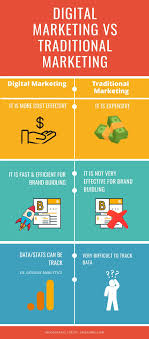Title: Unleashing the Power of Digital Marketing Strategies
Introduction:
In today’s fast-paced digital era, businesses need to stay ahead of the competition by harnessing the power of effective digital marketing strategies. With an ever-increasing number of online users and a plethora of platforms available, it has become imperative for businesses to have a robust digital presence. In this article, we will explore some key digital marketing strategies that can help businesses thrive in the digital landscape.
Content Marketing:
Content is king in the realm of digital marketing. By creating valuable and engaging content, businesses can attract and retain their target audience. A well-crafted content marketing strategy involves producing high-quality blog posts, articles, videos, infographics, and social media posts that resonate with the target audience’s needs and interests. This approach not only helps build brand authority but also drives organic traffic to websites.
Search Engine Optimization (SEO):
A strong SEO strategy is crucial for businesses aiming to rank higher in search engine results pages (SERPs). By optimizing website content with relevant keywords, improving website speed and user experience, and building quality backlinks, businesses can enhance their online visibility and attract organic traffic from search engines like Google. Investing in SEO ensures that potential customers find your business when searching for products or services related to your industry.
Social Media Marketing:
Social media platforms have become powerful tools for connecting with audiences on a personal level. Developing a comprehensive social media marketing strategy involves understanding your target audience’s preferred platforms and tailoring content accordingly. Engaging with followers through regular posts, responding to comments and messages promptly, running targeted ad campaigns, and collaborating with influencers are effective ways to increase brand awareness, drive website traffic, and generate leads.
Email Marketing:
Despite being one of the oldest forms of digital marketing, email marketing remains highly effective when executed strategically. Building an email list allows businesses to nurture leads by delivering personalized content directly to their inbox. By segmenting the email list based on demographics, interests, or purchase history, businesses can create targeted campaigns that resonate with specific customer segments. Offering exclusive promotions, personalized recommendations, and valuable content via email helps build customer loyalty and drives conversions.
Pay-Per-Click (PPC) Advertising:
PPC advertising provides businesses with an opportunity to reach their target audience through paid search engine ads or display ads on various platforms. By bidding on relevant keywords and optimizing ad campaigns, businesses can drive targeted traffic to their websites instantly. PPC advertising offers precise targeting options, allowing businesses to reach the right audience at the right time. Monitoring campaign performance and making data-driven optimizations are essential for maximizing ROI.
Conclusion:
Digital marketing strategies have revolutionized the way businesses connect with their target audience in today’s digital landscape. By leveraging content marketing, SEO techniques, social media marketing, email marketing, and PPC advertising effectively, businesses can enhance brand visibility, drive website traffic, generate leads, and increase conversions. Embracing these strategies and staying updated with emerging trends will empower businesses to thrive in the ever-evolving digital world.
Commonly Asked Questions: Digital Marketing Strategies Unveiled
- What is your top 3 digital marketing strategies to attract clients?
- What are the 4 C’s of digital marketing?
- What are the 7 C’s of digital marketing?
- What are the 4 key marketing strategies?
What is your top 3 digital marketing strategies to attract clients?
- Content Marketing: Creating and sharing valuable and relevant content is an effective way to attract clients. By producing informative blog posts, engaging videos, helpful guides, or insightful social media posts, businesses can establish themselves as industry experts and build trust with their target audience. This strategy not only helps attract potential clients but also positions the business as a go-to resource in their field.
- Search Engine Optimization (SEO): A strong SEO strategy is crucial for attracting clients organically through search engine results. By optimizing website content with relevant keywords, improving website speed and user experience, and building quality backlinks, businesses can increase their visibility in search engine rankings. When potential clients search for products or services related to the business, a solid SEO strategy ensures that the business appears prominently in their search results.
- Social Media Marketing: Leveraging social media platforms allows businesses to reach a vast audience and engage with potential clients directly. By creating compelling content tailored to each platform’s unique features and preferences, businesses can attract attention, build brand awareness, and establish meaningful connections with their target audience. Engaging with followers through regular posts, responding to comments and messages promptly, and running targeted ad campaigns are effective ways to attract clients through social media channels.
Remember that these strategies work best when implemented cohesively as part of an overall digital marketing plan. It’s important to analyze your target audience’s preferences, monitor performance metrics regularly, and make data-driven optimizations to ensure the strategies are effective in attracting clients specific to your business goals.
What are the 4 C’s of digital marketing?
The 4 C’s of digital marketing are a customer-centric framework that focuses on creating meaningful connections and engagement with the target audience. They are:
- Content: Content plays a crucial role in digital marketing. It refers to the creation and distribution of valuable, relevant, and engaging information that resonates with the target audience. High-quality content helps build brand authority, attracts organic traffic, and fosters customer loyalty.
- Context: Context refers to delivering the right message to the right audience at the right time and through the right channel. Understanding the context involves analyzing consumer behavior, preferences, demographics, and interests to tailor marketing efforts accordingly. By personalizing content based on context, businesses can enhance customer experiences and increase conversions.
- Community: Building a strong online community is essential for successful digital marketing. Engaging with customers through social media platforms, forums, or online communities fosters relationships and creates a sense of belonging. By actively participating in conversations, addressing queries or concerns promptly, and encouraging user-generated content, businesses can nurture a loyal community that advocates for their brand.
- Conversion: Conversion is the ultimate goal of digital marketing campaigns. It refers to turning prospects into paying customers or achieving desired actions such as signing up for newsletters or downloading resources. Effective conversion strategies involve optimizing landing pages, simplifying user journeys, implementing persuasive calls-to-action (CTAs), and leveraging data analytics to continuously improve conversion rates.
By focusing on these 4 C’s – Content, Context, Community, and Conversion – businesses can develop customer-centric digital marketing strategies that drive engagement, loyalty, and ultimately lead to business growth in today’s dynamic digital landscape.
What are the 7 C’s of digital marketing?
The 7 C’s of digital marketing are a framework that helps businesses understand and implement effective digital marketing strategies. These C’s are:
- Content: Creating valuable and relevant content is at the core of digital marketing. It involves producing compelling text, images, videos, and other forms of content that engage and resonate with the target audience.
- Context: Understanding the context in which your target audience interacts with your brand is crucial. This includes knowing their demographics, preferences, behaviors, and interests to tailor your digital marketing efforts accordingly.
- Channels: Identifying the right channels to reach your target audience is essential. This involves selecting the appropriate platforms such as social media, search engines, email marketing, or mobile apps to effectively deliver your message.
- Communication: Effective communication is key to building relationships with customers in the digital realm. Engaging with your audience through personalized messages, prompt responses to queries or comments, and interactive content helps foster trust and loyalty.
- Community: Building a community around your brand creates a sense of belonging for your customers. Encouraging user-generated content, facilitating discussions on social media platforms or forums, and organizing events can help foster a strong community that advocates for your brand.
- Conversion: The ultimate goal of digital marketing is to convert leads into customers. Optimizing conversion funnels by utilizing persuasive call-to-actions (CTAs), landing pages, and user-friendly website interfaces can enhance conversion rates.
- Commerce: Digital marketing aims to drive business growth by generating revenue through online transactions or offline conversions. Streamlining the purchasing process, offering secure payment options, and optimizing e-commerce experiences are critical for successful commerce in the digital space.
By incorporating these 7 C’s into their digital marketing strategies, businesses can create meaningful connections with their target audience while achieving their goals of brand awareness, customer engagement, and increased conversions in the online marketplace.
What are the 4 key marketing strategies?
The four key marketing strategies are:
- Product Differentiation: This strategy focuses on creating a unique and compelling product or service that stands out from competitors. By offering distinctive features, superior quality, or innovative solutions, businesses can attract customers who value the unique benefits they provide. Product differentiation can be achieved through branding, design, technology, or customer experience.
- Market Segmentation: Market segmentation involves dividing the target market into distinct groups based on characteristics such as demographics, psychographics, behavior, or needs. By understanding the specific needs and preferences of different customer segments, businesses can tailor their marketing efforts to effectively reach and engage each group. This strategy allows for more personalized messaging and better allocation of resources.
- Pricing Strategy: Pricing is a critical element of marketing strategy that directly impacts customer perception and profitability. Businesses can adopt various pricing strategies such as cost-based pricing (setting prices based on production costs), value-based pricing (setting prices based on perceived value to customers), penetration pricing (setting low initial prices to gain market share), or premium pricing (setting higher prices to position as a luxury brand). The chosen pricing strategy should align with the target market’s willingness to pay and the business’s overall objectives.
- Promotional Strategy: Promotional strategies aim to create awareness, generate interest, and persuade customers to purchase a product or service. This includes advertising campaigns across various channels such as television, radio, print media, digital platforms, social media marketing, public relations activities, sales promotions, direct marketing efforts like email or SMS campaigns, and influencer collaborations. The promotional mix should be tailored to reach the target audience effectively and communicate the unique value proposition of the product or service.
These four key marketing strategies work together to help businesses identify their target market, position their products or services effectively within that market segment by highlighting unique features or benefits while considering pricing strategies that align with customer expectations. Additionally, an effective promotional strategy ensures that the target audience is aware of the offering and motivated to make a purchase. By combining these strategies strategically, businesses can increase their competitiveness, attract customers, and drive growth.



